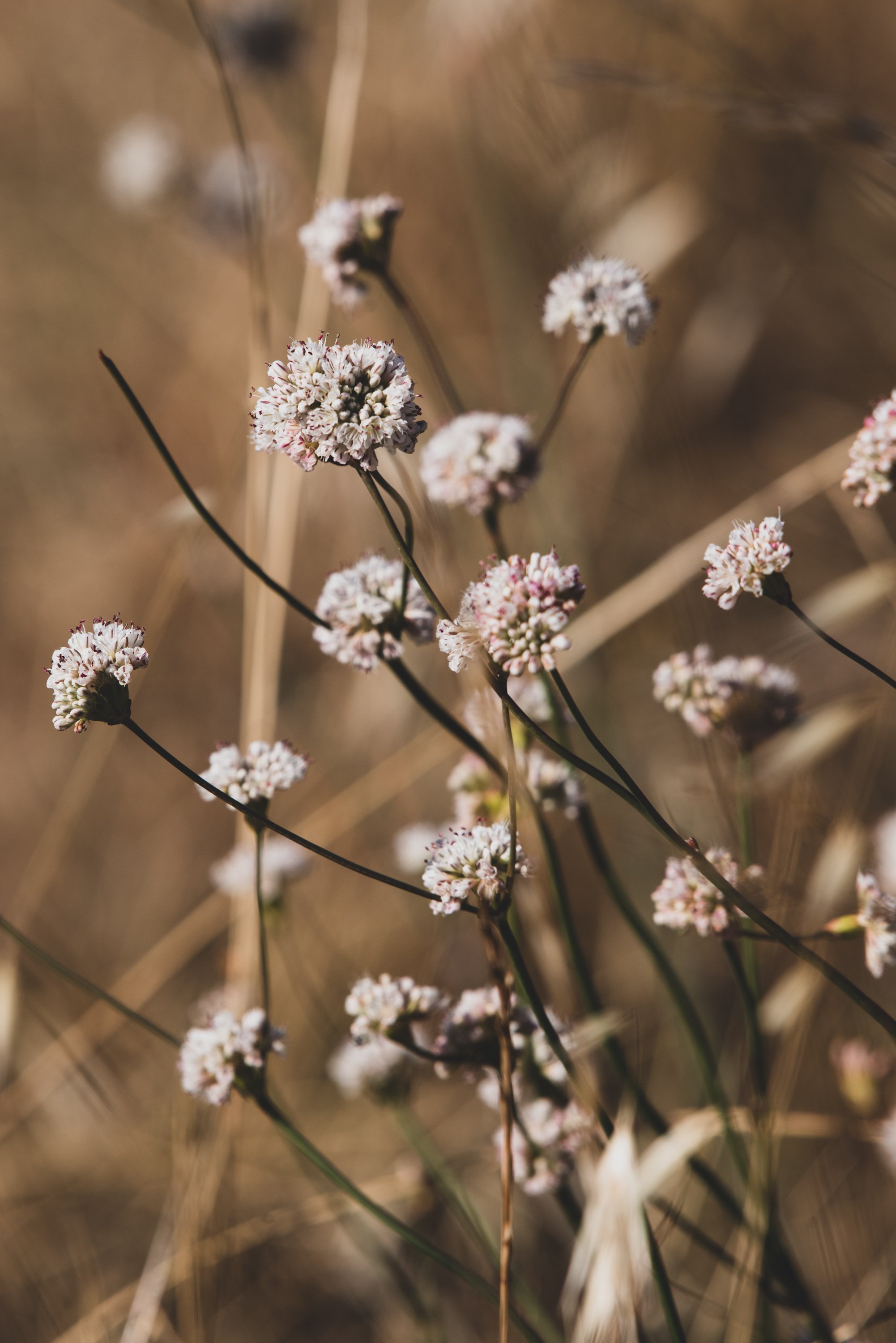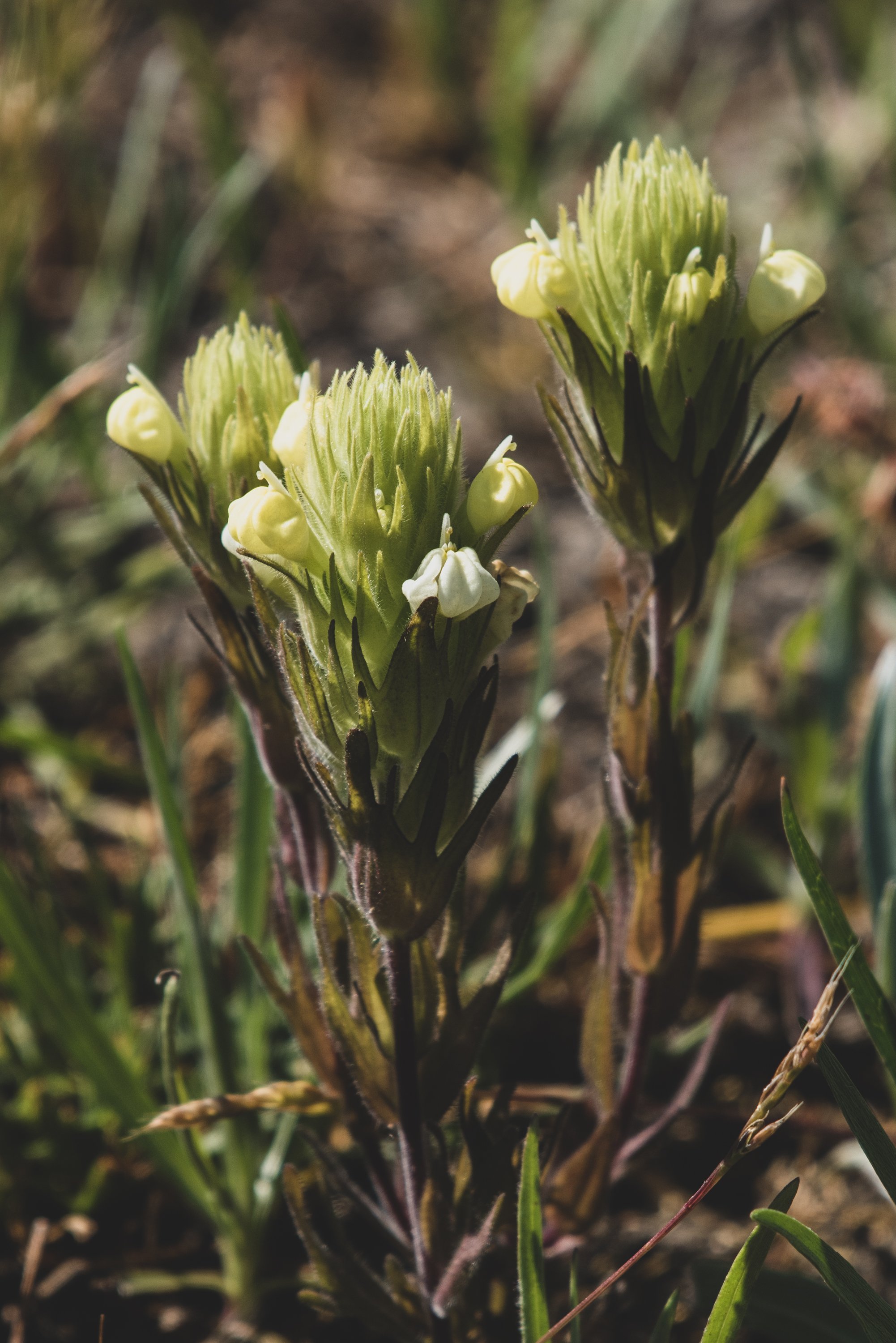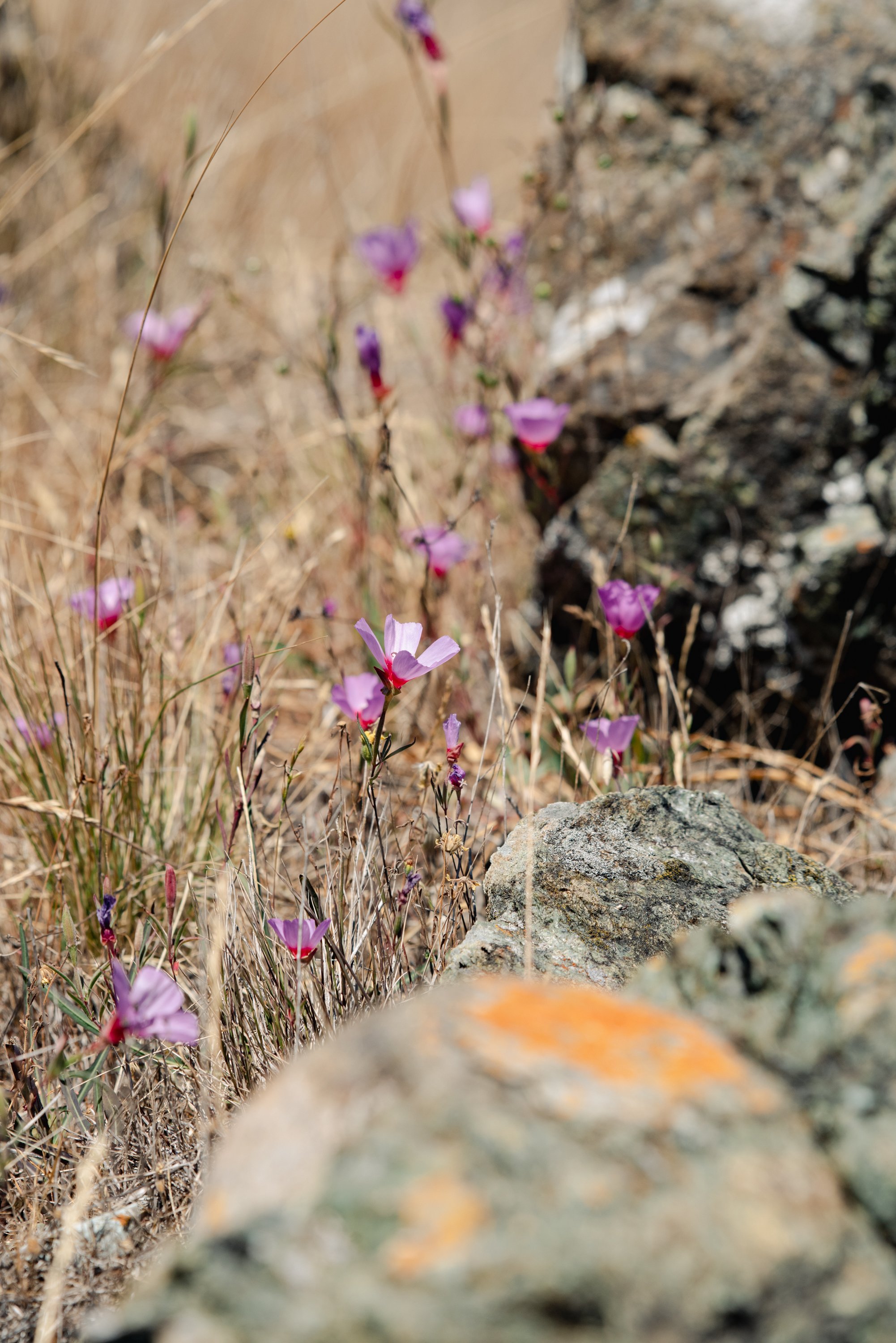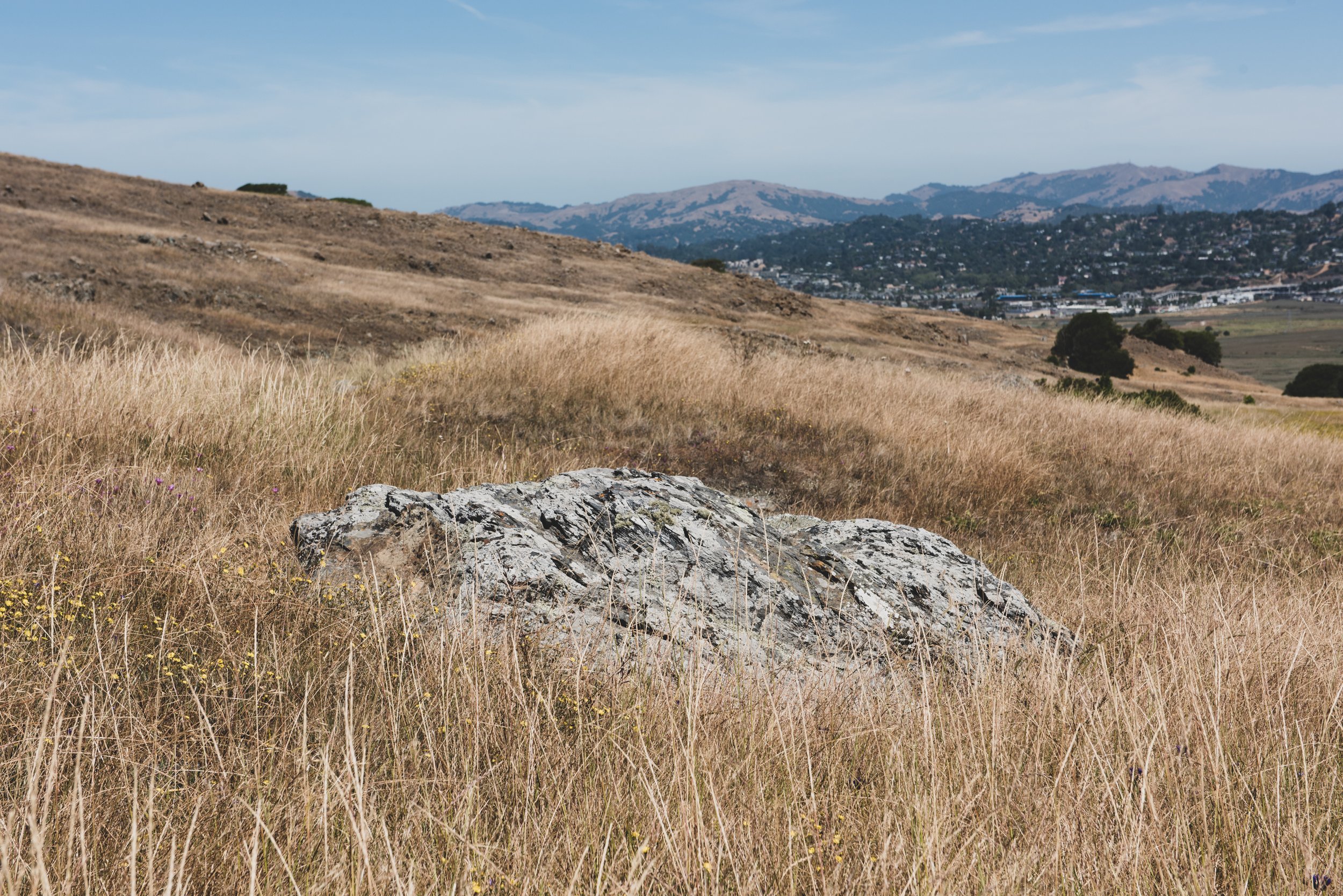Ring Mountain Preserve
On this early June visit to the Ring Mountain Preserve on the Tiburon Peninsula, the color palette was pink and gold. There were rouge veiny backlit ears of a jackrabbit, blushing white and salmon pink buckwheat blooms, ripe peaches and cream petals of the Tiburon Mariposa lily, deep magenta stems of sea bluff lettuce, and fields of ruby chalice clarkia—all displayed against a backdrop of dry golden grasses. These blooms are the last of the spring displays, before the quiet summer season is in full force.
The serpentine soils of Ring Mountain have shaped its unusual ecosystem—one that supports several rare and endangered plant species.
Serpentine soils are poor in nutrients and contain high heavy metal concentrations, making growing conditions difficult. Many of the plants on Ring Mountain have adaptations that allow them to thrive in these harsh soils, but they cannot grow elsewhere—they are called narrow endemics.
A few of these fascinating species include the Tiburon Mariposa lily (found nowhere else in the world), the Tiburon jewelflower, Tiberon buckwheat, and showy Indian clover.
A network of trails crisscrosses Ring Mountain
Tiburon Mariposa Lily (Calochortus tiburonensis)
Tiburon Mariposa Lily (Calochortus tiburonensis)
Rocky serpentine area
The sun illuminates the ears of the Jackrabbit, making the veins visible.
Nude Buckwheat (Eriogonum nudum var. nudum)
Nude Buckwheat (Eriogonum nudum var. nudum)
Cream-sacs (Castilleja rubicundula ssp. lithospermoides)
Coyote Mint (Monardella species)
The Serpentine rock is shiny gray-green with a wax-like appearance
Ruby Chalice Clarkia (Clarkia rubicunda)
Ruby Chalice Clarkia (Clarkia rubicunda)
California Poppy (Eschscholzia californica)
White Rosinweed (Calycadenia multiglandulosa)
Hairy-petal Hog Fennel (Lomatium dasycarpum ssp. dasycarpum)
Chick Lupine (Lupinus microcarpus var. densiflorus)
Tiburon Buckwheat (Eriogonum luteolum var. caninum)
Dudleya farinosa (Sea-bluff-lettuce)




















